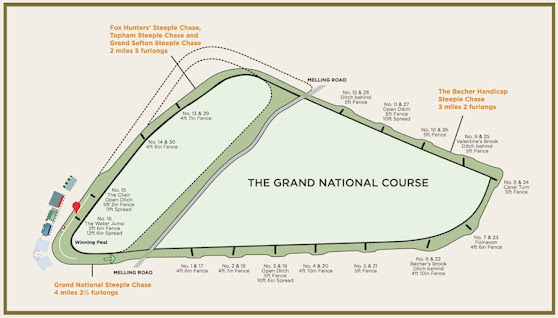Googly (pronounced goo-glee)
(1) In cricket, a bowled ball that swerves in one direction and breaks in the other; an off-break bowled with a leg break action. The delivery was once also known as the bosie or bosie-ball and is now commonly referred to as the wrong'un.
(2) Something protruding; exophthalmic (rare).
(3) A slang term for bulging eyes (archaic).
Circa 1880s: Apparently an invention of modern English but the origin is uncertain. It may have been from the mid-nineteenth century use of goggle (to stare at admiringly or amorously'' although google was during the same era used to describe the Adam's apple, derived presumably from the sense of eyes which are thought similarly protruding, either literally or figuratively, a meaning alluded to by a popular hero in a contemporary comic strip being named “Goo” (suggesting ''sentimental, amorous''). Googly (and a number of variant spellings) does appear around the turn of the twentieth century to have been in common use as an adjective applied to the eyes. The numerical value of googly in Chaldean numerology is 2 and in Pythagorean numerology, 5. Googly is a noun & adjective; the noun plural is googlies.
Bernard Bosanquet sending down a googly.
In cricket, a googly is a type of delivery bowled by a right-arm leg spin bowler. It differs from the classic leg spin type delivery, in that the ball is propelled from the bowler's hand in a way that upon hitting the pitch, it deviates in a direction opposite from that the batter expects (ie towards the leg rather than the off stump). Usually now called the wrong'un, it was once also called the bosie, the eponym referring to English cricketer Bernard Bosanquet (1877-1936) who is believed to have invented the action. That the googly is Bosanquet’s creation is probably true in the sense that he was the one who practiced the delivery, learning to control and disguise it so it could be deployed when most useful. However, cricket being what it is, it’s certain that prior to Bosanquet, many bowlers would occasionally (and perhaps unintentionally have bowled deliveries that behaved as googlies but, being something difficult to perfect, few would have been able to produce it on demand. What Bosanquet, uniquely at the time, did was add it to his stock repertoire which inspired other bowlers to practice.
The “googly problem” also exists in “twister theory”, one of the many esoteric branches of theoretical physics understood only by a chosen few. In twister theory, the “googly problem” is nerd shorthand for what’s properly known as “the gravitational problem”, an allusion to certain observed behavior differing from that which would be predicted by the mysterious twister theory, rather the same experience suffered by the batter in cricket who finds his leg stump disturbed by a ball he had every reasonable expectation would harmlessly go through to the keeper down the off side. As one might expect of a work which involves a "googly problem", the author was an English mathematician, the Nobel laureate in physics, Sir Roger Penrose (b 1931). It's presumed one of his pleasures has been explaining the googly reference to physicists from places not well acquainted with the charms of cricket.
Bosanquet appears to have perfected his googly between 1897-1901 and, as a noun, the word has been attached to it since shortly afterwards, documented in publications in England, Australia and New Zealand from circa 1903. However, that was just the point at which a certain delivery which was so distinctive to demand an identifier came to be regarded as the definitive googly, a word which had long been used to describe cricket balls which behaved erratically off the pitch, a use perhaps based on the long use of “google-eyed” to refer to a surprised expression (ie those of the bamboozled batter). Some etymologists have pondered whether the construct might thus be the phonetic goo + guile but few have ever supported this. Googly was by the late-nineteenth century a well-known word used adjectively to describe spin-bowling which proved effective but there’s no suggestion it implied a particular type of delivery. Googly and the odd variant seem to have been a way of refereeing to balls which relied on a slow delivery and spin through the air to turn off the pitch as opposed to those bowled fast or at medium pace, using the seam on the ball to achieve any movement. All the evidence suggests the word was used to convey some unusual behavior.
Here, in the one match report are deliveries described both as being googly (ie used as an adjective) and the googler (a noun) but there’s nothing here or anywhere else to suggest either is anything more specific than a reference to beguiling slow bowling. Everything suggests the existence of both the noun and adjective was deliberate rather than some sloppy antipodean sub-editing. Whatever the nuances of Briggs' bowling however, it must have been effective because in the same match he took what was then only the third hat-trick (a bowler taking wickets with three successive balls in the one innings) in Test cricket. There has been the suggestion the adjectival use (apparently an Australian invention) as "googly ones" was an allusion to the idea of how a cricket ball might behave if egg-shaped, this based on the then widely-used local slang "googie" used for eggs. Googie was from the Irish and Scottish Gaelic gugaí, gogaí & gogaidh (a nursery word for an egg). Although wholly speculative, the notion has received support but more popular is the idea it was based on the use of googly in the manner of "googly-eyed", slang for eyes which bulged or were in some way irregular.



















